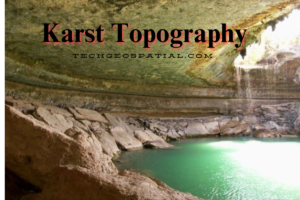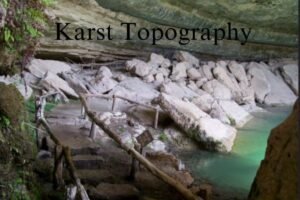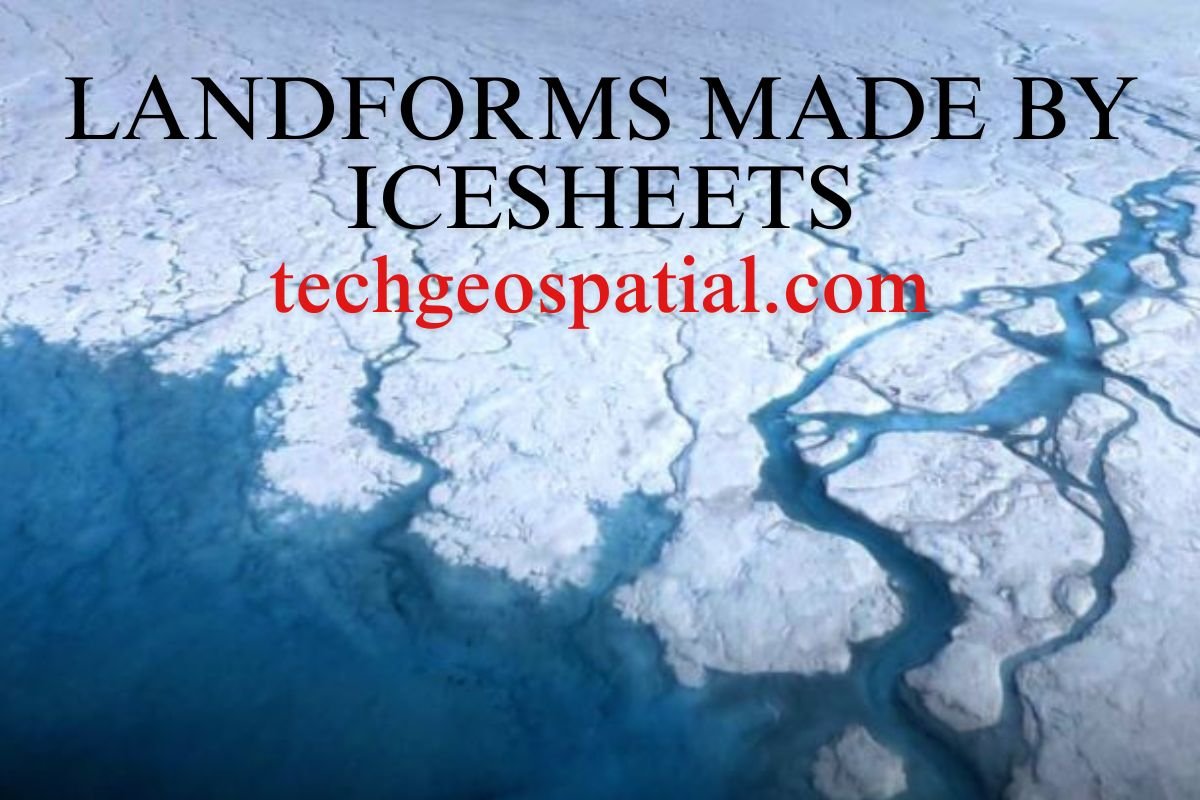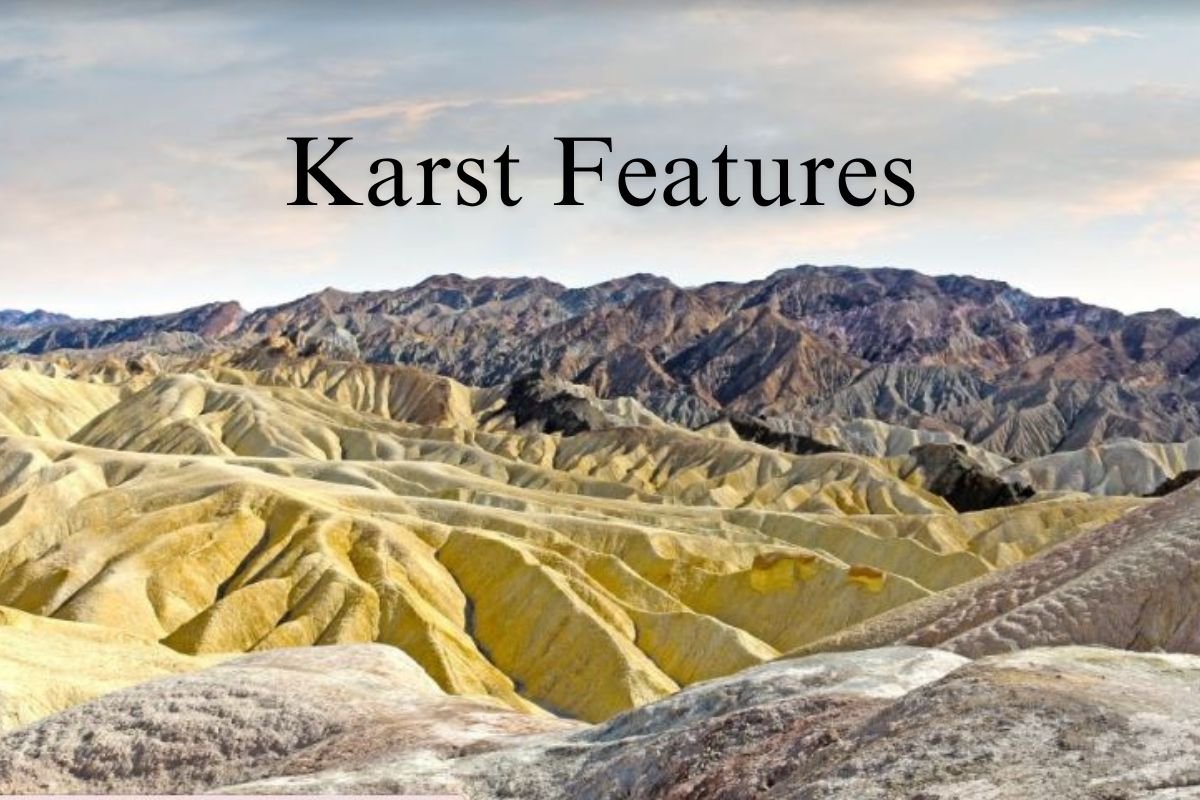Exploring Karst Topography:
Karst topography is a fascinating geological phenomenon that shapes unique landscapes across the globe. From towering limestone formations to intricate cave systems, karst features captivate the imagination and provide valuable insights into Earth’s history and natural processes.
Introduction to Karst Topography
Karst topography originates from the dissolution of soluble rocks such as limestone, dolomite, and gypsum. This process, known as karstification, results in distinctive landforms characterized by underground drainage systems and porous rock surfaces.
Characteristics of Karst Topography

One of the defining characteristics of karst landscapes is the presence of sinkholes, which form when the underlying rock dissolves, creating voids that collapse under the weight of the surface layers. Caves and caverns are also common features, carved out by flowing water over thousands of years.
Types of Karst Landforms
Karst topography encompasses various landforms that are formed due to the dissolution of soluble rocks like limestone, dolomite, and gypsum. Some of the key types of karst landforms include:
- Sinkholes: These are depressions or holes in the ground that form when the underlying rock dissolves, creating cavities that eventually collapse. Sinkholes can vary in size from small pits to large craters and can pose hazards to infrastructure and safety.
- Caves and Caverns: Karst regions often feature extensive cave systems carved out by the erosive action of water over thousands or even millions of years. Caves and caverns can range from small passages to vast underground chambers, sometimes adorned with stalactites and stalagmites formed by mineral deposits.
- Springs: Karst landscapes are known for their abundance of springs, where groundwater emerges from the underground drainage system to the surface. Springs can range from small seeps to large, gushing flows and are important sources of freshwater for ecosystems and human communities.
- Disappearing Streams: In karst regions, surface streams may abruptly disappear underground as they flow into sinkholes or fissures in the rock. These disappearing streams contribute to the complexity of karst hydrology and can re-emerge as springs downstream, sometimes miles away from their point of disappearance.
Distribution of Karst Topography
Karst landscapes are found across the globe, and many regions are famous for their stunning karst formations. Here are some of the most notable karst regions around the world:
- Guilin and Yangshuo, China: The karst hills and limestone formations in Guilin and Yangshuo, located in the Guangxi Zhuang Autonomous Region of southern China, are iconic symbols of Chinese landscape painting. The Li River meanders through a surreal landscape of towering limestone peaks, creating breathtaking scenery that has inspired artists and travelers for centuries.
- Ha Long Bay, Vietnam: This UNESCO World Heritage Site in northeastern Vietnam is renowned for its dramatic karst scenery. Thousands of limestone islands rise from the emerald waters of the Gulf of Tonkin, forming a maze of towering pillars, hidden caves, and secluded beaches. Ha Long Bay is a popular destination for cruises, kayaking, and exploring its otherworldly landscapes.
- Soča Valley, Slovenia: Nestled in the Julian Alps of Slovenia, the Soča Valley is known for its rugged karst terrain, crystal-clear rivers, and vibrant turquoise waters. The valley is home to the emerald Soča River, which cuts through limestone gorges, cascading over waterfalls and forming deep pools beloved by kayakers, rafters, and outdoor enthusiasts.
- Mulu National Park, Malaysia: Located on the island of Borneo in Malaysian Borneo’s Sarawak state, Mulu National Park is a UNESCO World Heritage Site renowned for its extensive cave systems and diverse karst landscapes. The park is home to some of the world’s largest cave chambers, including the Sarawak Chamber in Deer Cave and the Clearwater Cave system, attracting spelunkers and adventurers from around the world.
- The Burren, Ireland: Situated along the western coast of Ireland in County Clare, the Burren is a unique karst landscape characterized by its limestone pavements, fissures, and caves. Despite its relatively barren appearance, the Burren is home to a rich diversity of flora, including rare alpine and Mediterranean plants, making it a haven for botanists and nature enthusiasts.
Importance of Karst Topography

Karst environments play a crucial role in maintaining ecological balance, serving as habitats for unique plant and animal species. They also provide valuable water resources and contribute to the formation of some of the world’s most spectacular landscapes.
Human Interaction with Karst Landscapes
Despite their ecological and geological significance, karst landscapes face numerous threats from human activities such as urbanization, mining, and pollution. Conservation efforts are essential to preserve these fragile ecosystems for future generations.
Famous Karst Regions Around the World
Some of the most famous karst landscapes include the Guilin karst hills in China, the limestone cliffs of Ha Long Bay in Vietnam, and the karst valleys of Slovenia’s Soča River.
Karst Topography and Water Resources
Karst landscapes play a critical role in groundwater storage and distribution, serving as natural reservoirs that supply water to communities around the world. However, they are also vulnerable to pollution and contamination.
Threats to Karst Environments
Pollution from agricultural runoff, sewage, and industrial waste poses a significant threat to karst ecosystems, while urbanization and deforestation further exacerbate these challenges. Climate change also presents risks such as increased flooding and erosion.
Conservation of Karst Landscapes
Efforts to protect karst environments include the establishment of nature reserves, implementation of water management strategies, and promotion of sustainable tourism practices. Community involvement is key to ensuring the long-term preservation of these unique landscapes.
Future Prospects of Karst Studies
Advancements in technology, such as LiDAR imaging and groundwater modeling, are revolutionizing our understanding of karst landscapes and their underlying processes. Continued research is essential to address emerging threats and protect these valuable ecosystems.
Case Study: Mammoth Cave National Park
Mammoth Cave National Park in Kentucky, USA, is home to the world’s longest known cave system. Recognized for its ecological significance and geological diversity, the park serves as a model for karst conservation and sustainable tourism.
Conclusion
Karst topography represents a convergence of geological forces and ecological dynamics, shaping landscapes of unparalleled beauty and complexity. As stewards of the Earth, it is our responsibility to protect and preserve these unique environments for future generations to enjoy.
FAQs on Karst Topography
- What causes the formation of sinkholes? Sinkholes form when underground limestone is dissolved by acidic groundwater, creating voids that eventually collapse.
- How does karst topography affect groundwater resources? Karst landscapes act as natural aquifers, storing and transmitting groundwater that is vital for drinking water and agricultural irrigation.
- Can karst landscapes be found only on land, or are there underwater karst formations as well? Karst features can also be found underwater, such as submarine caves and sinkholes in coastal regions.
- Are there any specific plants or animals adapted to live in karst environments? Yes, karst ecosystems support a variety of specialized species, including cave-dwelling bats, blind cavefish, and unique plant species adapted to thrive in rocky terrain.
- How do humans benefit from karst topography? Humans benefit from karst landscapes in numerous ways, including tourism revenue, recreational opportunities, and access to freshwater resources.






One thought on “Karst Topography”